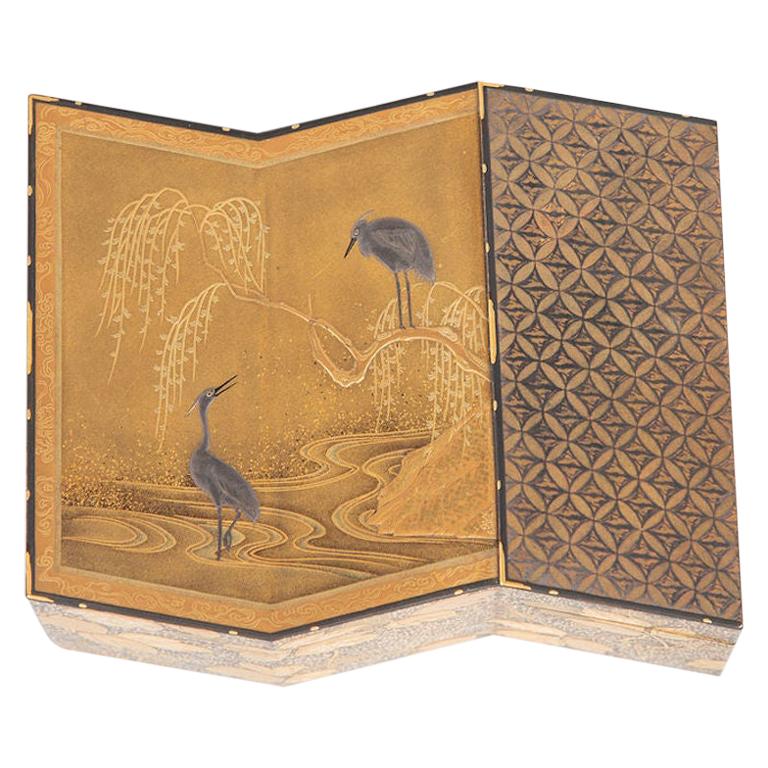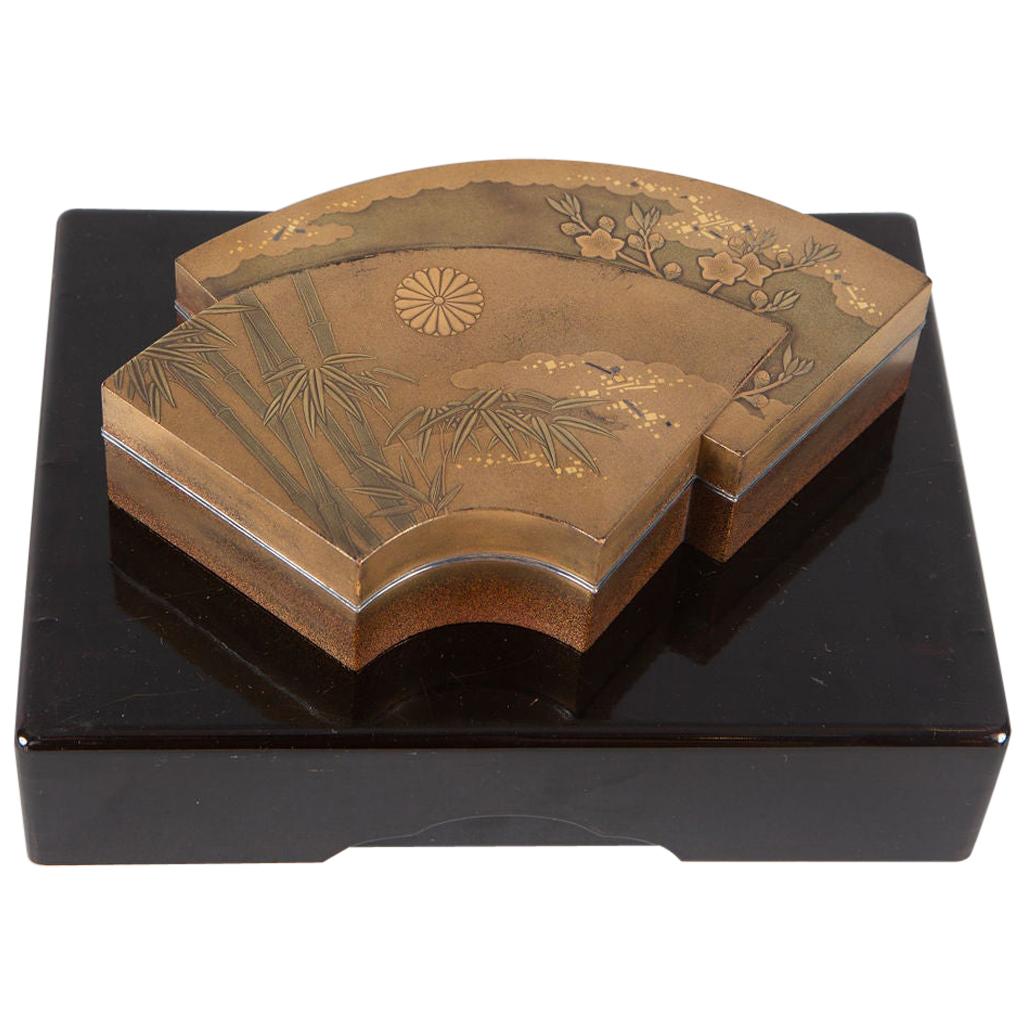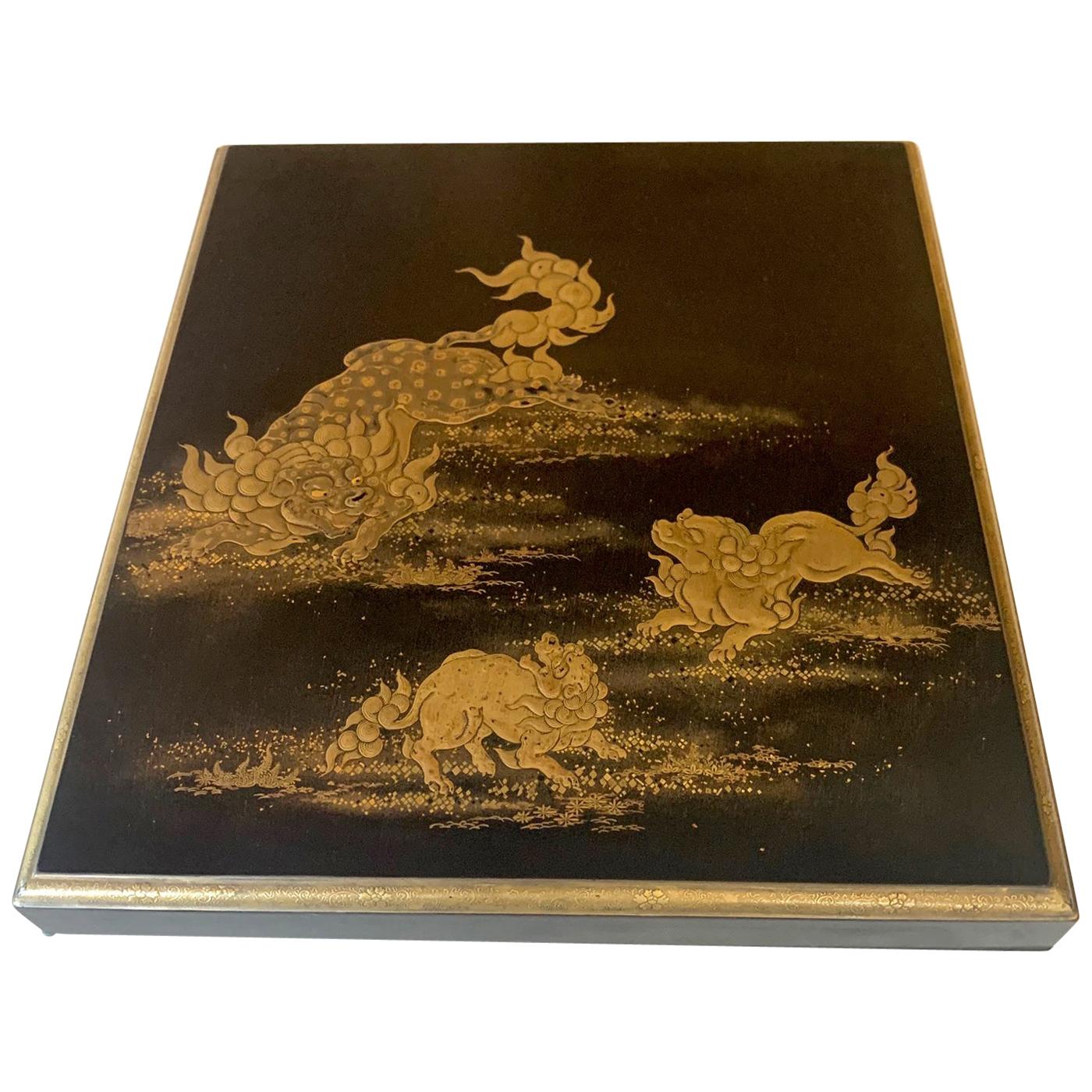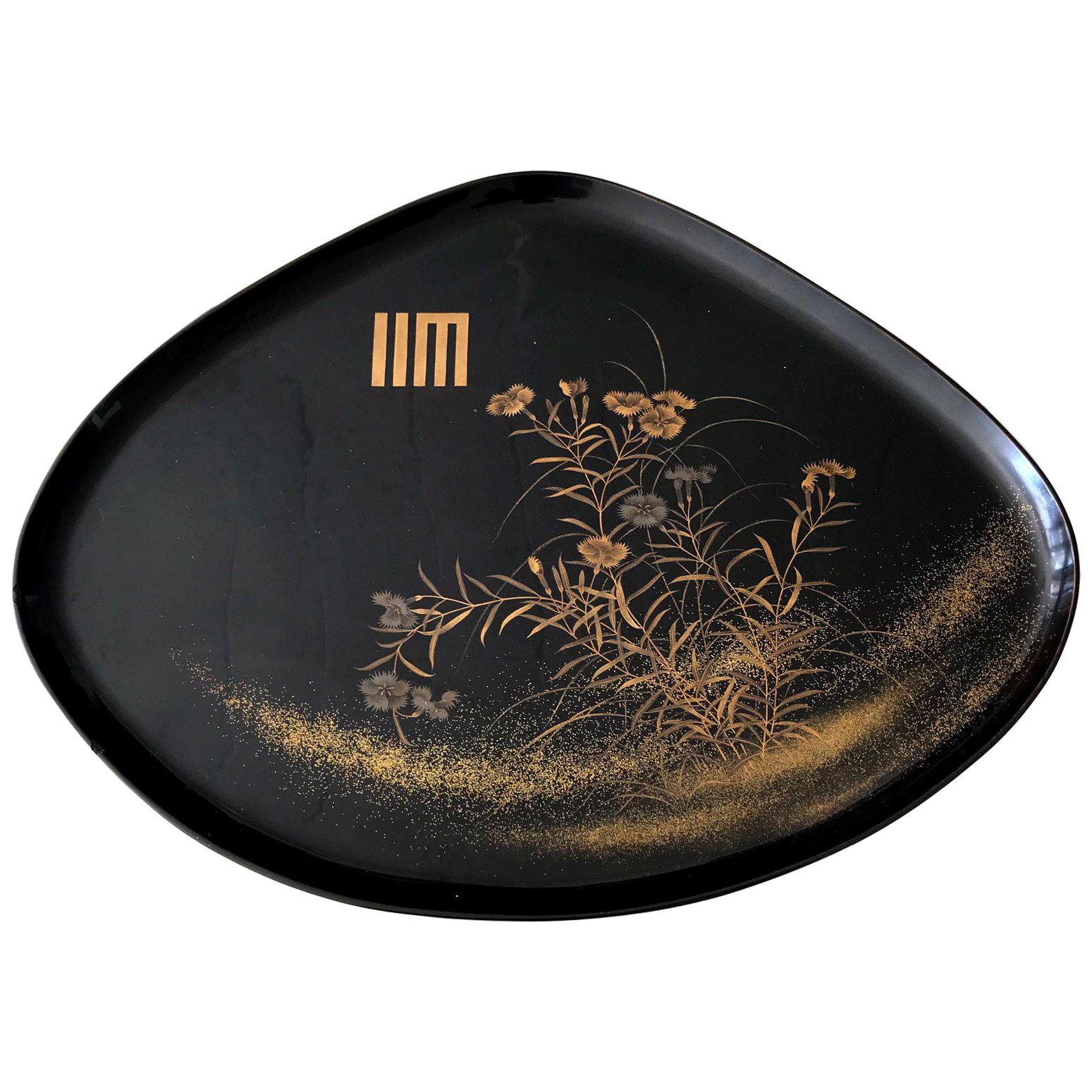Items Similar to Kogo box in maki-è lacquer depicting a naturalistic scene
Want more images or videos?
Request additional images or videos from the seller
1 of 8
Kogo box in maki-è lacquer depicting a naturalistic scene
About the Item
Kogo box in maki-è lacquer, with a domed lid depicting a naturalistic scene. The gold decoration depicts the Japanese pine, known as Matsu, and a typical house with a thatched roof along the banks of a waterway.
Sold with its tomobako.
Origin: Japan
Period: Meiji end of 19th century.
Dimensions: 3.5 x 7 x 8 cm.
State of conservation: Very good
- Dimensions:Height: 1.38 in (3.5 cm)Width: 2.76 in (7 cm)Depth: 3.15 in (8 cm)
- Style:Japonisme (In the Style Of)
- Materials and Techniques:Lacquer,Lacquered
- Place of Origin:
- Period:
- Date of Manufacture:Meiji late 19th century
- Condition:
- Seller Location:Milano, IT
- Reference Number:1stDibs: LU9162239391502
About the Seller
No Reviews Yet
Vetted Seller
These experienced sellers undergo a comprehensive evaluation by our team of in-house experts.
1stDibs seller since 2023
- ShippingRetrieving quote...Ships From: Milano, Italy
- Return PolicyA return for this item may be initiated within 14 days of delivery.
More From This SellerView All
- A Japanese maki-è lacquer inroLocated in Milano, ITJapanese inro with two compartments, in maki-è lacquer with nashiji decorations and circular reserves depicting flowers and leaves. Coral colored ojime and lacquer manju netsuke. Si...Category
Antique Mid-19th Century Japanese Japonisme Lacquer
MaterialsLacquer
- A Japanese Lacquer Inro Depicting A Daikokuten With His HammerLocated in Milano, ITJapanese lacquer inro depicting a Daikokuten with his hammer watching children, next to a Matsu plant. Excellent quality decoration with relief details, shine and original patina. ...Category
Antique Mid-18th Century Japanese Japonisme Lacquer
MaterialsLacquer
- A boxwood netsuke depicting a snakeLocated in Milano, ITBoxwood netsuke depicting a snake coiled around itself. Signature engraved under the base. Origin: Japan Period: Meiji late 19th century. Dimensions: 4 x 3.5 x 2 cm. State of co...Category
Antique 19th Century Japonisme Antiquities
MaterialsBoxwood
- A Japanese patinated bronze vase depicting a cricketLocated in Milano, ITA slender shape patinated bronze vase depicting a naturalistic scene of a cricket sitting on iris leaves. Signed Joun in relief within an oval reserve. Origin: Japan Period: Meiji ...Category
Antique Late 19th Century Japanese Japonisme Metalwork
MaterialsBronze
- A large bronze vase depicting an egretLocated in Milano, ITLarge bronze vase depicting an egret, in relief, on a perch in the center of a watercourse, surrounded by four swimming fish. The figure of the egret emerges from the vase with remar...Category
Antique Late 19th Century Japanese Japonisme Metalwork
MaterialsBronze
- A Japanese boxwood okimono depicting a koi carpLocated in Milano, ITBoxwood okimono depicting a koi carp. The eyes, in mother-of-pearl and black horn, are inlaid with precision, while the overlapping scales on the body give extraordinary realism. Th...Category
Antique Late 19th Century Japanese Japonisme Antiquities
MaterialsBoxwood
You May Also Like
- Fine Lacquer Kogo 'Incense Box'Located in Hudson, NYExquisitely detailed incense storage box in gold lacquer with silver and gold overlays of a folded screen with heron and willow design. Flowers and winding leaves on the sides.Category
Antique Late 19th Century Japanese Meiji Lacquer
MaterialsLacquer
- Japanese Lacquer Kogo 'Incense Box'Located in Hudson, NYLate Edo (1614 - 1868) period incense storage box in stacked, double fan design. Fans have bamboo and plum design with a chrysanthemum crest. Silver metal rim and seat, nashiji (gold...Category
Antique Mid-19th Century Japanese Edo Lacquer
MaterialsGold
- Japanese Maki-e Lacquer Stack Box JubakoLocated in Atlanta, GAAn antique jubako (stack boxes) with five tiers in an elongated octagon shape circa 19th century (end of Edo or beginning of Meiji period). jubako was traditionally used to store and...Category
Antique 19th Century Japanese Japonisme Lacquer
MaterialsWood, Lacquer
- Japanese Lacquer Box with Fine Maki-e Decoration Meiji PeriodLocated in Atlanta, GAA lacquered wood box with lid from Japan circa 19th century Meiji Period. The finely decorated box was used to store paper slips and small documents on the desk. It is overall finished with black lacquer (kuro) with sparse Mura-Nashiji effect outside and on the top surface of the lid, there are three Komainu, (sometimes known as Shishi or Japanese lions) frolicking and forming a circle in lively motion. Komainu are auspicious animals in Japanese cultures in both Shinto and Buddhism tradition. Originally from China, these animals symbolizes guardians to ward off evil spirits. Hiramaki-e was used in combination with carving and combing to render the lions with various surface textures. A gilt border with an slight angle was given to the lid and even the thin band is decorated with miniature floral scrolls. The interior of the box was finished in a dense nashiji. Underneath the lid, a cluster of peonies open lavishly by two gentle mounts. Takamaki-e (high relief) in both gold and silver were...Category
Antique Late 19th Century Japanese Japonisme Lacquer
MaterialsWood, Lacquer
- An Antique Japanese Lacquer Maki-e TrayLocated in Atlanta, GAA fan shape black lacquer tray from Japan circa 1910-30s, late Meiji to early Showa era. Elaborated decorated with a bundle of yomogi blossom in a very fine Maki-e technique using both gold and silver powders. There is a Japanese symbol on the top left, which represents yomogiu, stemming from yomogi (蓬), a wild plant that belongs to the chrysanthemum family and widely grown in Japan. This name yomogui is from a scene in the Tale of Genji...Category
Early 20th Century Japanese Japonisme Lacquer
MaterialsLacquer
- Japanese Maki-e Lacquer Tray Box with Cutout DesignLocated in Atlanta, GAA Japanese lacquer box with lid and an inner tray decorated with Maki-e on a dense nashiji background. The fine box was likely made circa 1920-30s during the Tashio period and likely...Category
Vintage 1920s Japanese Taisho Lacquer
MaterialsWood, Lacquer
Recently Viewed
View AllMore Ways To Browse
Chinese Furniture Chair Chair
Sterling Service For 8
Antique Vintage Childrens Furniture
Tibetan Rug Hand Knotted
French Style Fireplace
Modern Rocking Chair
Couch With Pillows
Enamelled Pendant Italian
Low Round Dining
Walnut Furniture Antique Italy
Dining And Entertainment
Recycled Wood Furniture
Chiado Stools
Mid Century Garden Chairs
Type A Wall Sconce
Custom Small Sofa
1950 Glass Cabinet
Spirit Side Table





